Carbon fillter for water purifier
Clean, great-tasting water isn’t a luxury—it’s a necessity. Whether you’re using municipal tap water or sourcing it from a well, chemical contaminants, unpleasant odors, and taste issues are increasingly common. That’s where carbon filters come in. Often underestimated, these filters are a powerhouse stage in modern water purifiers, especially when removing chlorine, VOCs, and other harmful impurities.In this ultimate guide, we’ll demystify how carbon filters work, their types, benefits, and everything you need to maintain and choose the best one for your home. If water safety, taste, and performance matter to you—read on.
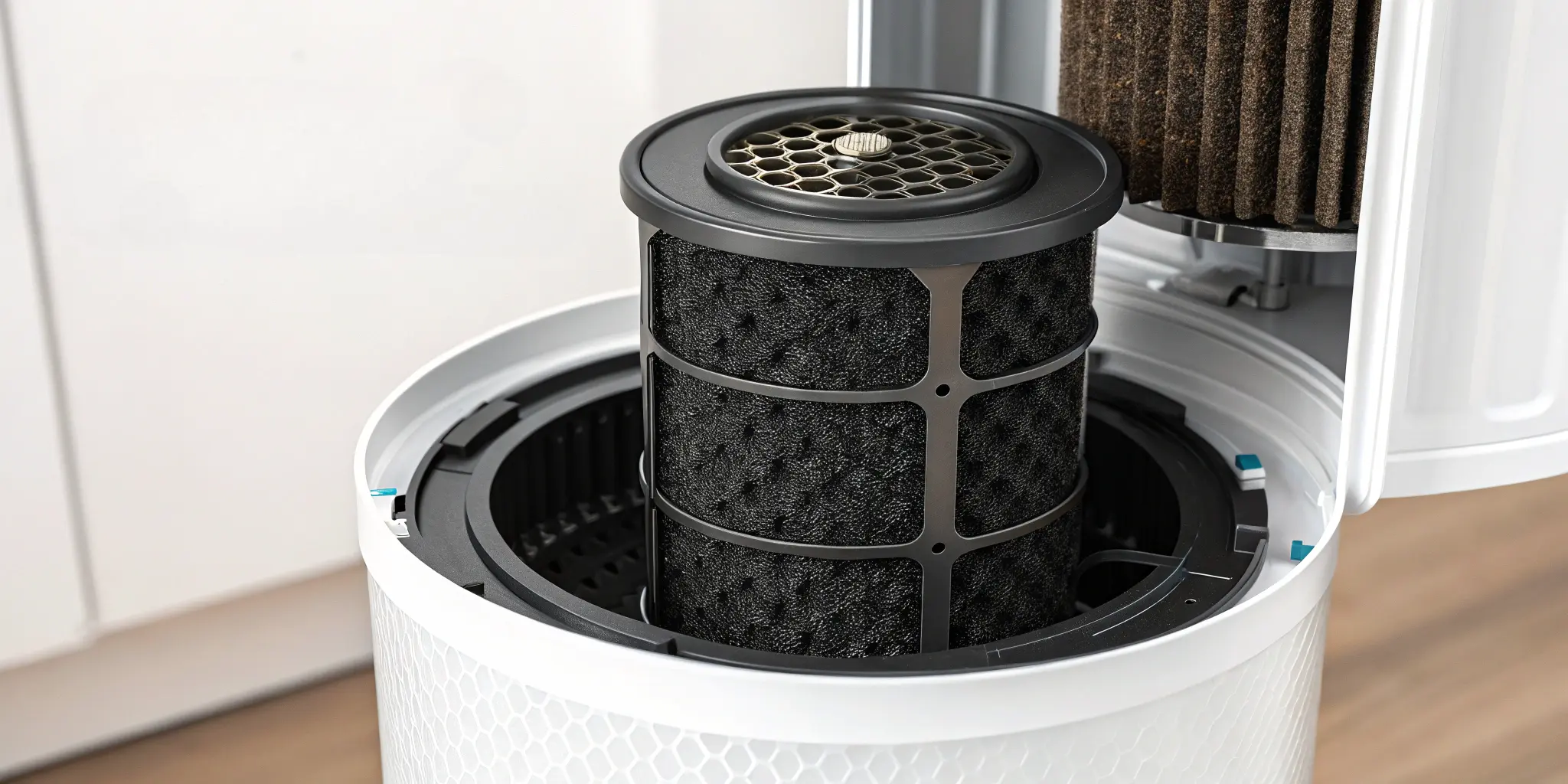
What is a Carbon Filter in a Water Purifier?
A carbon filter in a water purifier is a crucial component in multi-stage purification systems, typically situated after the sediment filter and before RO or UV stages. Its primary role is chemical removal—effectively trapping chlorine, volatile organic compounds (VOCs), and unpleasant odors to improve taste and safety. This stage ensures better performance and longevity of downstream filters like RO membranes or UV lamps.
How Carbon Filters Work in Water Purifiers: The Science of Cleaner Water
Carbon filters operate on the principle of adsorption, where contaminants adhere to the surface of the highly porous activated carbon material. This structure enables the efficient removal of chlorine, VOCs, pesticides, bad taste, and certain heavy metals like lead. Think of it as a molecular sponge, selectively capturing chemicals that degrade water quality.
Types of Carbon Filters Used in Water Purifiers
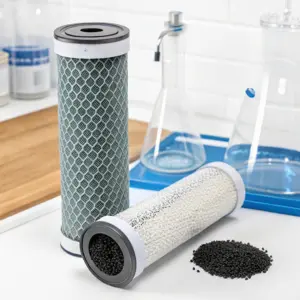
Granular Activated Carbon (GAC)
Loose granules allow faster water flow and are effective in improving taste and odor.
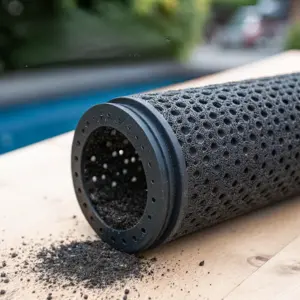
Carbon Block
Densely compressed carbon provides finer filtration, making it more efficient at contaminant removal but with slower flow.
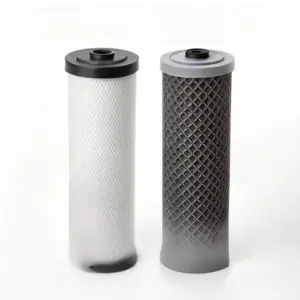
Activated vs Standard Carbon
Activated carbon is processed to maximize surface area, significantly increasing adsorption capacity.
Top 5 Benefits of Using a Carbon Filter in Your Water Purifier
Superior Taste & Odor Removal: Chlorine and organic compounds are neutralized, vastly improving flavor.
Reduction of Harmful Chemicals: VOCs, pesticides, and herbicides are effectively removed.
Protection for RO/UV Filters: Carbon filters trap chlorine, a substance known to degrade RO membranes and UV lamps
Removal of Some Heavy Metals: Filters can capture lead, mercury, and more, depending on design.
Enhanced Clarity & Safety: Cleaner, clearer water promotes better health and peace of mind.
Carbon Filter vs. Sediment Filter: Understanding Their Different Roles
| Feature | Sediment Filter | Carbon Filter |
|---|---|---|
| Main Function | Removes physical debris (dirt, sand) | Removes chemicals, odors, and bad taste |
| Filtration Type | Mechanical | Chemical (adsorption) |
| Placement in System | Usually first stage | Typically second stage |
Choosing the Best Carbon Filter for Your Drinking Water
1
Contaminant Profile: Test your water to determine chemical risks.
2
Filter Type: GAC offers fast flow; Carbon Block offers deeper filtration.
2
3
Micron Rating: A lower rating means finer particle capture.
4
Certifications: Look for NSF 42 (taste, chlorine) and NSF 53 (health contaminants).
4
5
Model Compatibility: Use manufacturer-recommended filters for best results.
Carbon Filter Replacement: When, Why & How Much?
When: Replace every 3–6 months based on usage and water quality. Signs include a return of bad taste or reduced flow.
Why: Old filters can harbor bacteria and compromise filtration.
How: Most are twist-out cartridges—follow your manual closely.
Cost: ₹500–₹2000, depending on brand and type. Avoid non-genuine parts.
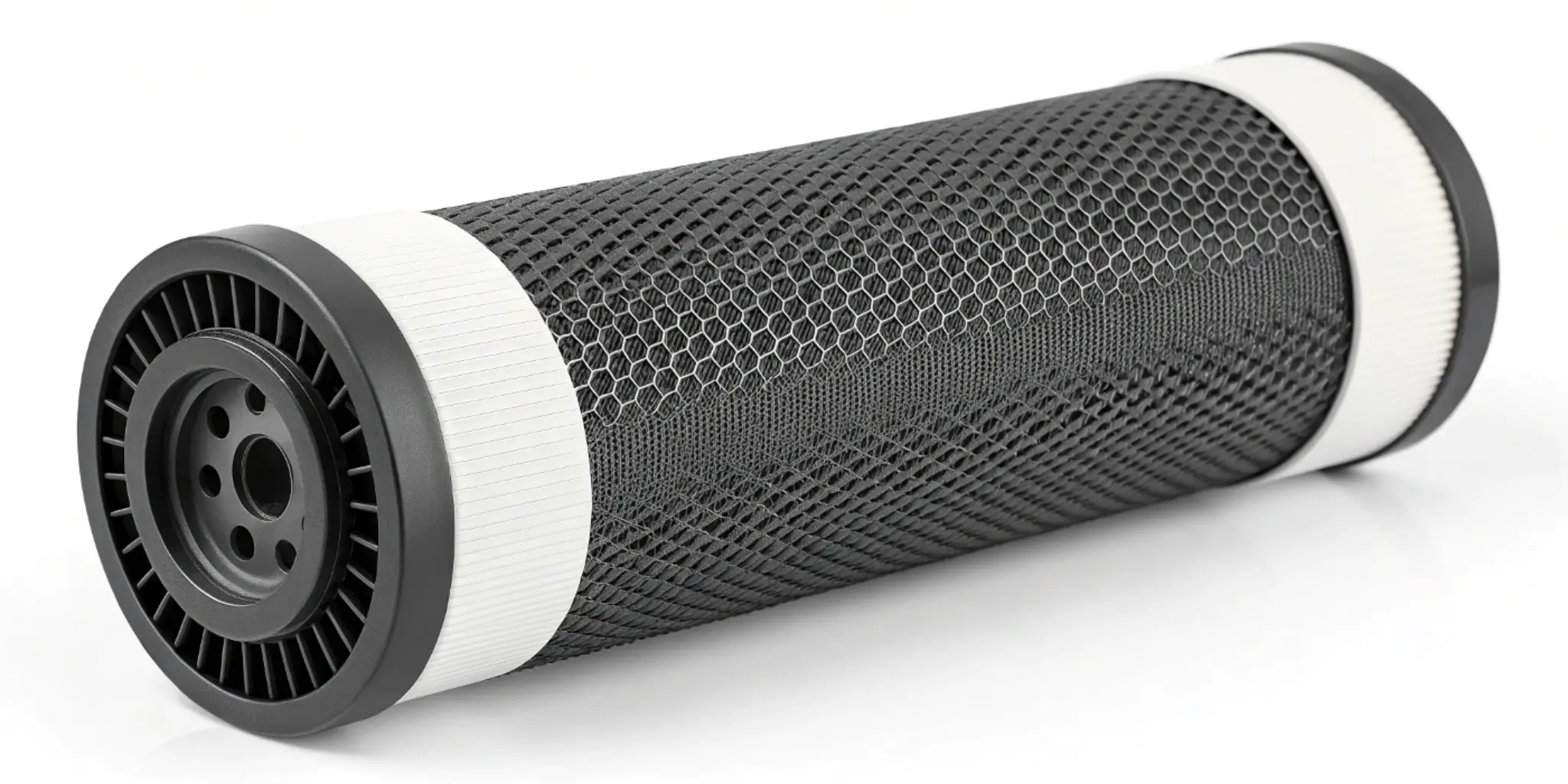
Why Choose Us?
Expert-Backed Content: Our water purification content is created and reviewed by certified water quality experts and technicians.
Real-World Guidance: We don’t just explain how filters work—we help you choose the right one for your water type, model, and budget.
Transparent Reviews: Our comparisons are unbiased. We never promote a product without clear performance data or certifications like NSF/ANSI 42 & 53.
Genuine Replacement Support: Need help finding compatible parts? Our Filter Finder Tool and customer support team have your back.
Community-Driven: Thousands of households trust us—and we learn from their feedback to update our guides regularly.
Frequently Asked Questions
What does a carbon filter remove from water?
Carbon filters remove chlorine, VOCs, pesticides, herbicides, and unpleasant tastes or odors. Some also reduce lead, mercury, and other heavy metals depending on the type.
Which carbon filter is best for home use?
For most homes, an activated carbon block filter offers better filtration than GAC. Look for NSF 42 and 53 certifications and choose based on your water test results.
How often should I replace my carbon filter?
Every 3 to 6 months, depending on water quality and usage. Signs of exhaustion include bad taste, odor, or reduced flow rate.
Are all carbon filters the same?
No. Granular Activated Carbon (GAC) filters offer faster flow, while Carbon Block filters remove finer contaminants. Always check the micron rating and certifications.
Can carbon filters remove fluoride or bacteria?
No, standard carbon filters can’t remove fluoride or microbes. Use RO, UV, or activated alumina filters for those concerns.
Is activated carbon safe for drinking water?
Yes. It’s food-grade, highly porous, and one of the most effective materials used in water filtration today.
Why is the water black after installing a new carbon filter?
This is due to carbon dust (fines). Flush the filter for 5–10 minutes as instructed to clear out initial residue.
